The Pros and Cons of Vacuum-Packed vs Fresh Meat
Vacuum-packed vs fresh meat is a key consideration for caterers planning menus, managing stock, and maintaining consistent quality in the kitchen. From banquet-scale events to custom dining experiences, how meat is stored and delivered affects everything from shelf life to flavour. In this guide, we take a closer look at the practical pros and cons of vacuum-packed vs fresh meat, offering clarity on which suits different types of food operations best.
The Case for Vacuum Packed Meat
Longer shelf life with less waste
One of the standout benefits of vacuum‑packed meat is its extended shelf life. By removing oxygen and sealing the meat in food‑grade plastic, bacterial growth and spoilage are significantly slowed. Cuts that might last just a few days fresh can stay safe and usable for up to several weeks when vacuum‑packed and chilled correctly. For businesses ordering in bulk or running multiple services a week, this can mean less spoilage, more control, and a tighter grip on margins.
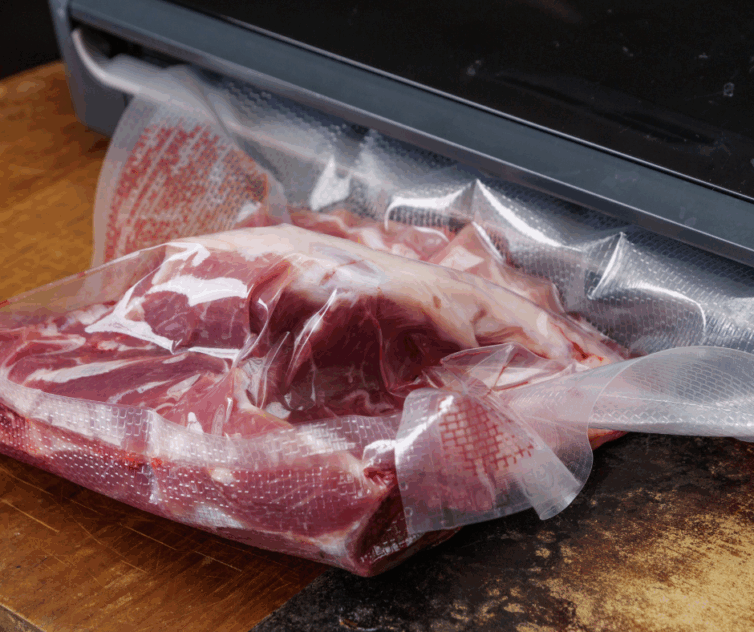
Cleaner storage and more consistent portioning
Vacuum packing doesn’t just preserve the meat, it also tidies the cold room. Packs stack neatly and take up less space than trays or butcher’s paper. Many suppliers, offer pre‑portioned options that are individually sealed, allowing chefs to pull only what they need for service. This ensures portion consistency, reduces prep time, and simplifies ordering.
Ideal for freezing and transport
Vacuum‑packed meat is particularly well suited to freezing. The airtight seal helps prevent freezer burn and moisture loss, preserving texture during thawing. For businesses with satellite kitchens, outside events or pop‑up dining concepts, this method also protects product integrity during transport, no leaks, no contamination risk.
Texture and preparation quirks
However, vacuum‑packed meat isn’t without its compromises. When first opened, the meat may release a mild odour or appear slightly damp from retained juices, known as purge. This isn’t spoilage, but chefs should allow meat to breathe before cooking. Additionally, some report a subtle change in texture, particularly with delicate cuts like fillet or liver, which can feel slightly denser after storage.
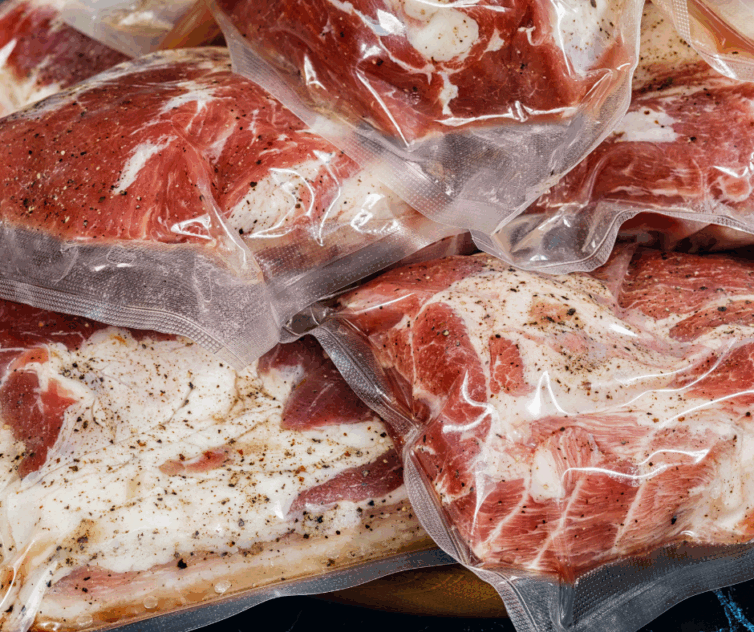
The Appeal of Fresh Meat
Superior flavour and mouthfeel
Fresh meat, butchered and delivered within hours or a day or two, offers a purity of flavour and tenderness that’s hard to beat. The natural marbling, moisture and fibre structure are fully intact, especially with well-aged British beef or free‑range poultry. For dishes that rely on searing, roasting or grilling to deliver character, think ribeye, lamb rump, or pork loin, fresh meat often performs better under heat, delivering that perfect caramelised crust and succulent interior.
No packaging, no compromise
Fresh meat arrives unpackaged or lightly wrapped, ready for immediate use. There’s no need to slice open vacuum seals or pat down wet surfaces, something chefs working under time pressure particularly value. The immediacy of fresh meat also supports full butchery in-house, allowing kitchens to adjust portion sizes on the fly or use offcuts creatively.
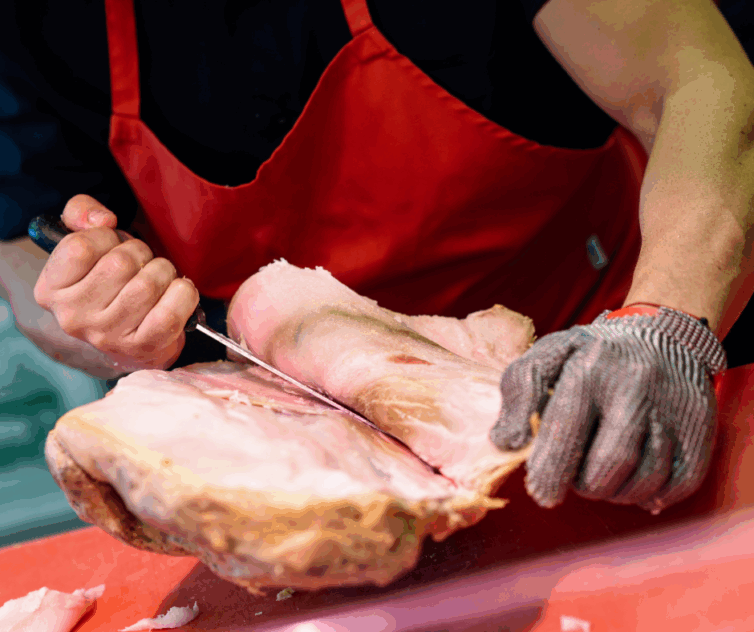
Shelf life challenges
That said, fresh meat demands a sharper focus on stock rotation. Even under ideal chilled conditions, its window for use is limited. Typically 3-5 days, depending on the cut and storage. Without careful planning, spoilage or last-minute menu changes can lead to waste.
Less predictable and harder to standardise
Portion sizes can vary slightly, and even skilled butchers won’t achieve identical weight and shape every time. For businesses producing hundreds of the same dish in a single sitting, this can mean extra work at the pass and tighter plating margins.
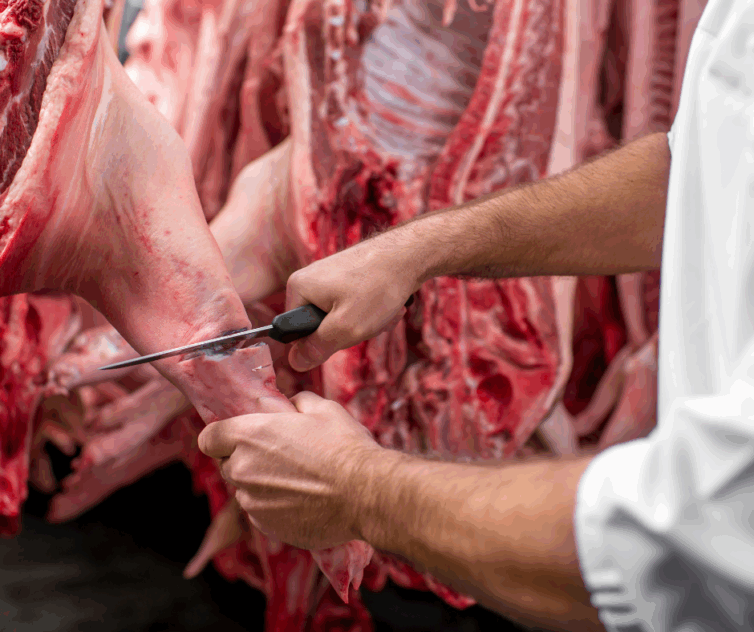
Choosing the Right Format for Your Kitchen
The vacuum-packed vs fresh meat decision often comes down to the nature of your kitchen:
- Event caterers and large‑scale operators
Venues serving weddings, conferences or stadium dining often lean towards vacuum‑packed meat. It allows early prep, easy portion control, and minimal waste, even with last‑minute changes to guest numbers. - Fine dining and à la carte restaurants
Kitchens that prize detail, flavour and finesse frequently choose fresh meat. For a tasting menu featuring rare breed pork belly or a perfectly blushed duck breast, fresh cuts give the chef ultimate control. - Mobile units or satellite kitchens
Vacuum‑packed meat is ideal when transport, limited refrigeration, or staffing constraints come into play. It’s hygienic, secure and straightforward to portion onsite. - Seasonal and artisan kitchens
From game season menus to slow-cooked whole joints, many chefs appreciate the hands-on flexibility of fresh meat. It allows for deeper connection to the product and often supports a craft-driven approach.
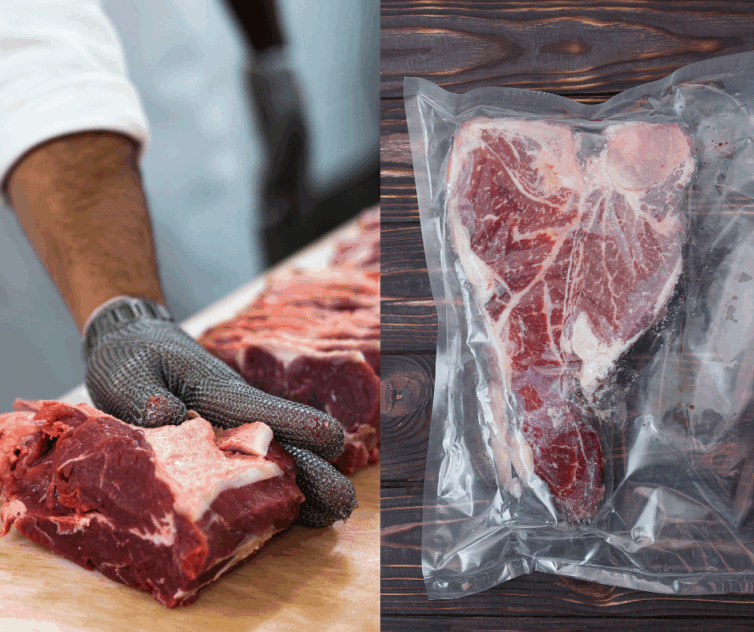
Final Thoughts on Vacuum-Packed vs Fresh Meat
Vacuum-packed vs fresh meat isn’t about one being better than the other. It’s about matching the format to your kitchen’s style, volume and values. Vacuum‑packed meat offers precision, reliability and longevity, making it invaluable for consistent, large‑scale catering. Fresh meat, meanwhile, delivers unmatched flavour, tenderness and character, perfect for kitchens where quality and craftsmanship come first.
If you’re still weighing up vacuum-packed vs fresh meat, consider adopting a mixed approach. Use vacuum‑packed meat for your volume cuts, freezer-ready prep and long-range planning, and reserve fresh meat for signature dishes where quality is non-negotiable.
Tailored sourcing solutions for every kitchen
Looking to optimise your meat sourcing? Burts supplies high-quality, fully traceable British meat to professional kitchens across Sussex, Surrey and Kent. Whether you’re feeding large numbers or making a more tailored menu, our team can advise on the most suitable formats and cuts to support your kitchen. Contact Burts to discuss your meat supply needs and find the right solution for your service.




